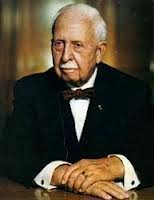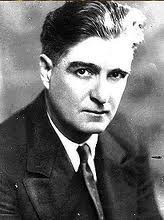Leonardo da Vinci worked on the Mona Lisa for years, hardly leaving the painting’s side. It was only from his deathbed that he gave the painting to his friend Francois I (King of France from 1515 to 1547).
The king hung Mona Lisa in his royal bath alongside an array of other paintings. He had so many paintings in his private quarters that the area has been compared to a semi-public art gallery.
When King Louis XIV moved the court to Versailles he took the painting with him. Upon ascending to the throne in 1715 Louis XV ordered the painting removed from the palace, as he hated it. During the French Revolution it was hidden in a warehouse, eventually making its way to the Louvre, (which had opened in 1793) for protection.
When Napoleon Bonaparte came to power in the early 1800s he began seizing treasure with abandon, collecting pieces like the great horses of Saint Mark’s Basilica, as well as da Vinci’s esteemed masterpiece; Bonaparte removed the painting from the Louvre and placed it in his own bedroom.
Bonaparte considered himself to be a great connoisseur of the arts. He even went so far as to temporarily rename the Louvre Museum after himself as a credit to his war-accumulated arts collection.
Following Bonaparte’s fall in 1814, more than 5,000 pieces of his “acquired” art were returned to their owners. The Mona Lisa was returned to her rightful place in the Louvre, where she remains for all to enjoy to this day.
We've got your new favorite seasonal dessert, right here. The creamy whipped frosting and the sweet apple pie filling make this Apple Cinnamon Poke Cake an absolute delight! It's an easy poke cake recipe that everyone will love. We're happy to say that all flavors of the season are captured here, making this our most delicious poke cake yet.
- 1 (21-ounce) can apple pie filling
- 1 (15.25-ounce) package white cake mix, batter prepared according to package directions
- 1 1/2 cups apple jelly
- 3/4 teaspoon ground cinnamon, divided
- 1/4 teaspoon ground nutmeg
- 1 (8-ounce) container frozen whipped topping, thawed
- Preheat oven to 350º. Coat a 9- x 13-inch baking dish with cooking spray.
- Remove apples from filling, dice, then stir into cake batter; reserve pie filling for later use. Add batter to baking dish.
- Bake 30 to 35 minutes or until a toothpick inserted in center comes out clean; let cool slightly. Using the end of a wooden spoon, poke holes about 1-inch apart all over top of cake.
- In a medium bowl, combine reserved pie filling, apple jelly, 1/2 teaspoon cinnamon, and the nutmeg; mix well. Pour apple mixture into holes and spread over top of cake.
- In a medium bowl, combine whipped topping and remaining 1/4 teaspoon cinnamon; mix well. Spread mixture evenly over cake. Refrigerate 3 hours, or until ready to serve.

1924 – Lauren Bacall, American actress (d.2014)
Mayflower Day commemorates the day the ship set sail from Plymouth, England in 1620.
On September 16 of 1620, the Mayflower set sail from Plymouth, England with 102 souls on board. These colonists- men, women, children, some seeking fortune, some seeking religious freedom – were later known as pilgrims.
The colonists’ intended to land at Virginia. However, after 66 days at sea, storms and winds blew them off course. After spotting modern-day Cape Cod, the members of the Mayflower intended on exploring the mouth of the Hudson River. However, rough seas continued to plague the ship. They turned back and stayed at Cape Cod.
For the next few weeks, the Pilgrims explored Cape Cod and eventually settled on Plymouth for their plantation.
HOW TO OBSERVE
Learn more about the journey of the Mayflower. Visit Plymouth Plantation and explore the history surrounding the Mayflower. Discovery more about the voyage and those who made the journey. Find out about their decisions and the making of the settlement.
MAYFLOWER DAY HISTORY
This day commemorates the day the Mayflower set sail for the New World. At the time, William Bradford, the separatist leader whose journal historians often reference for Mayflower history, recorded dates according to the Julian calendar. At that point in history, both the Julian and the Gregorian (the calendar most often used today) were both in use. There is a 10-day difference between the two calendars, accounting for the different dates across historical accountings of the Mayflower’s departure from Plymouth, England.













